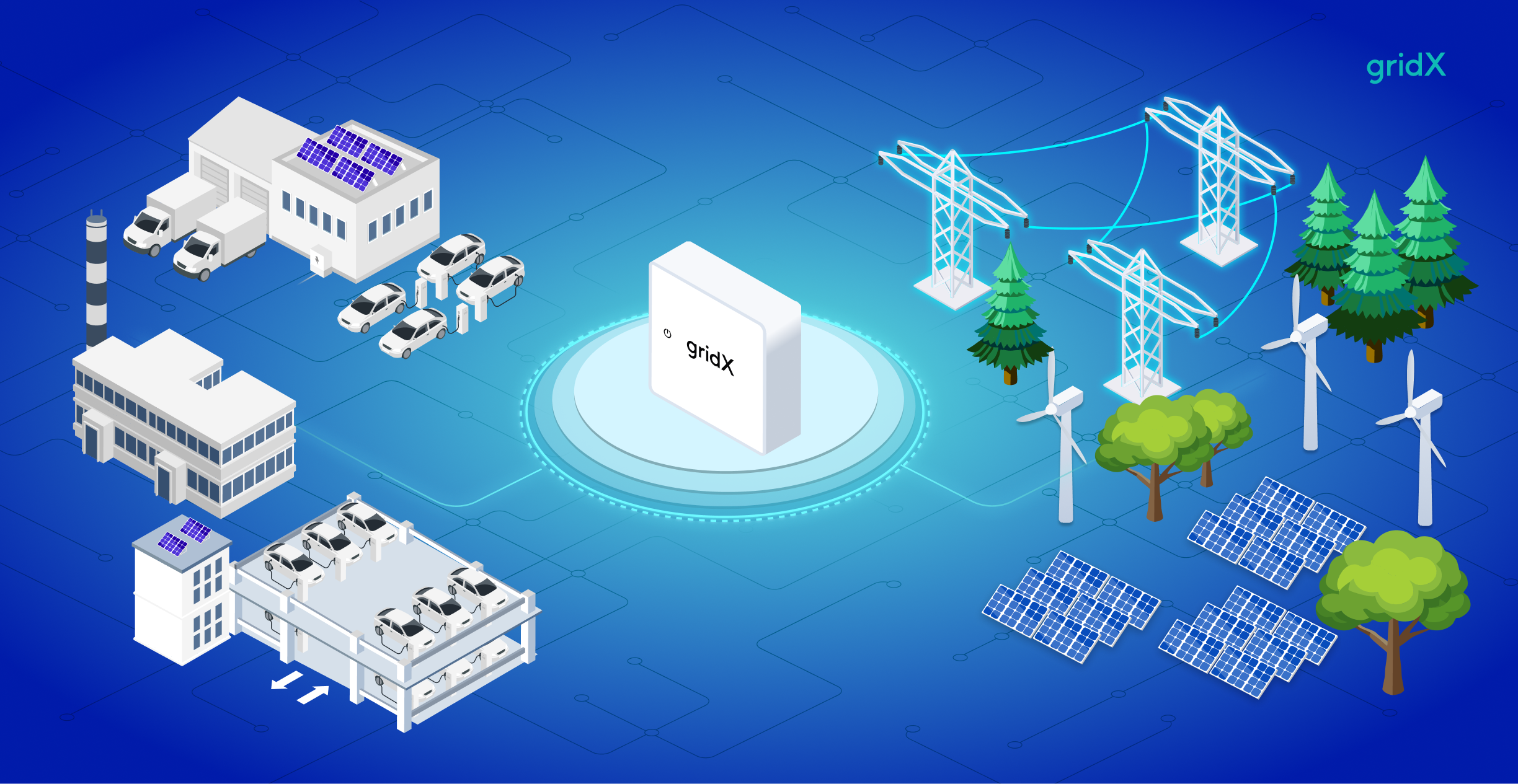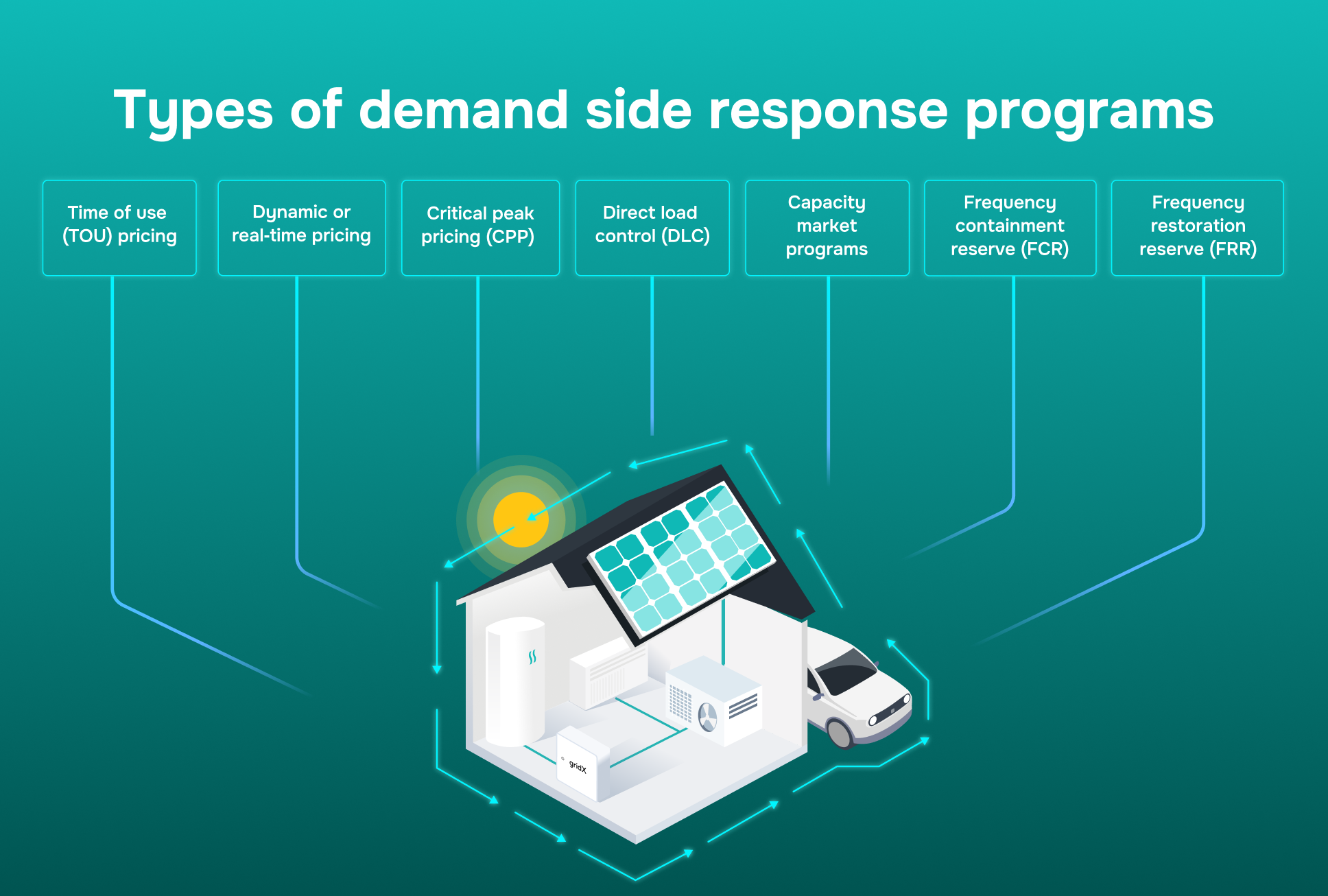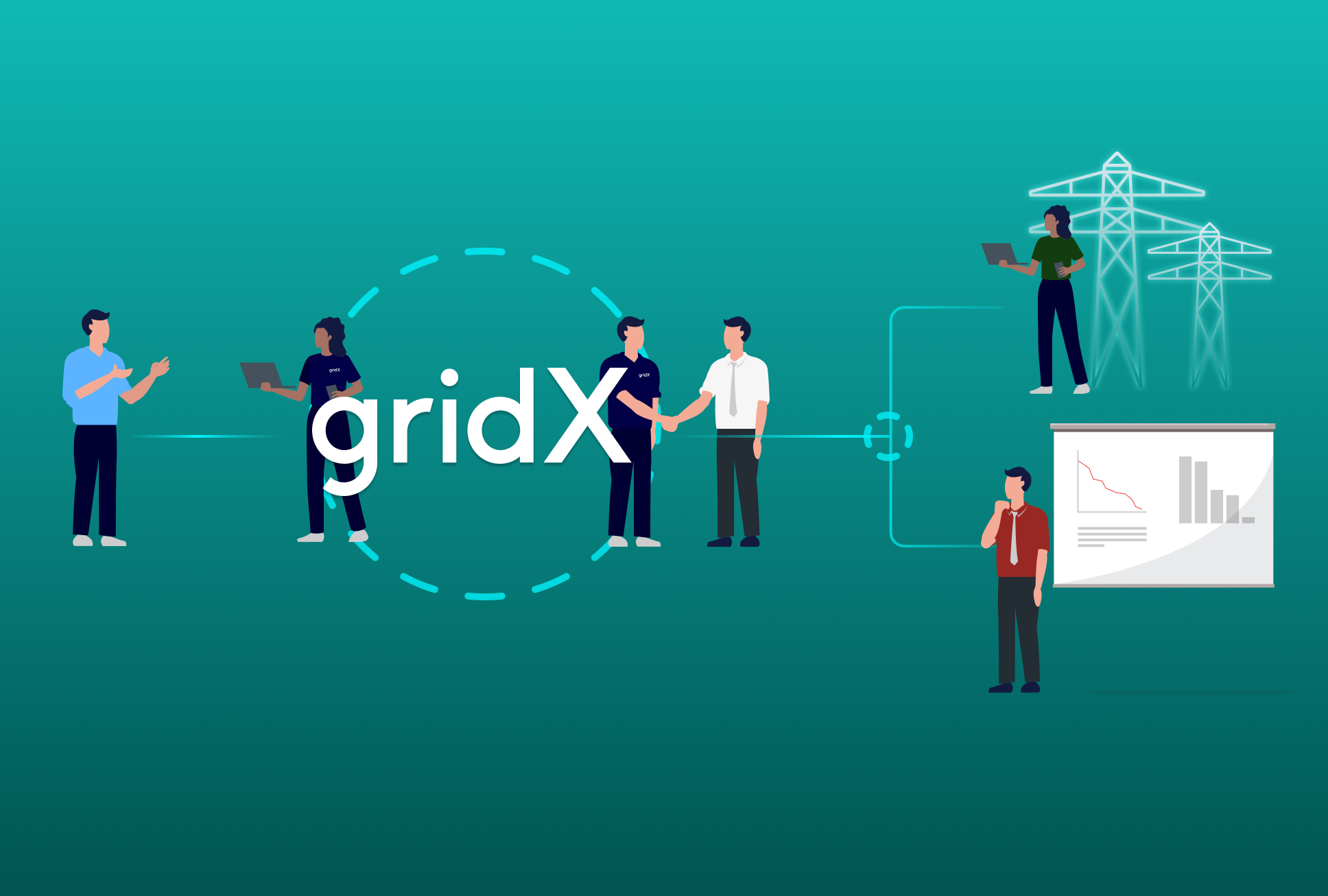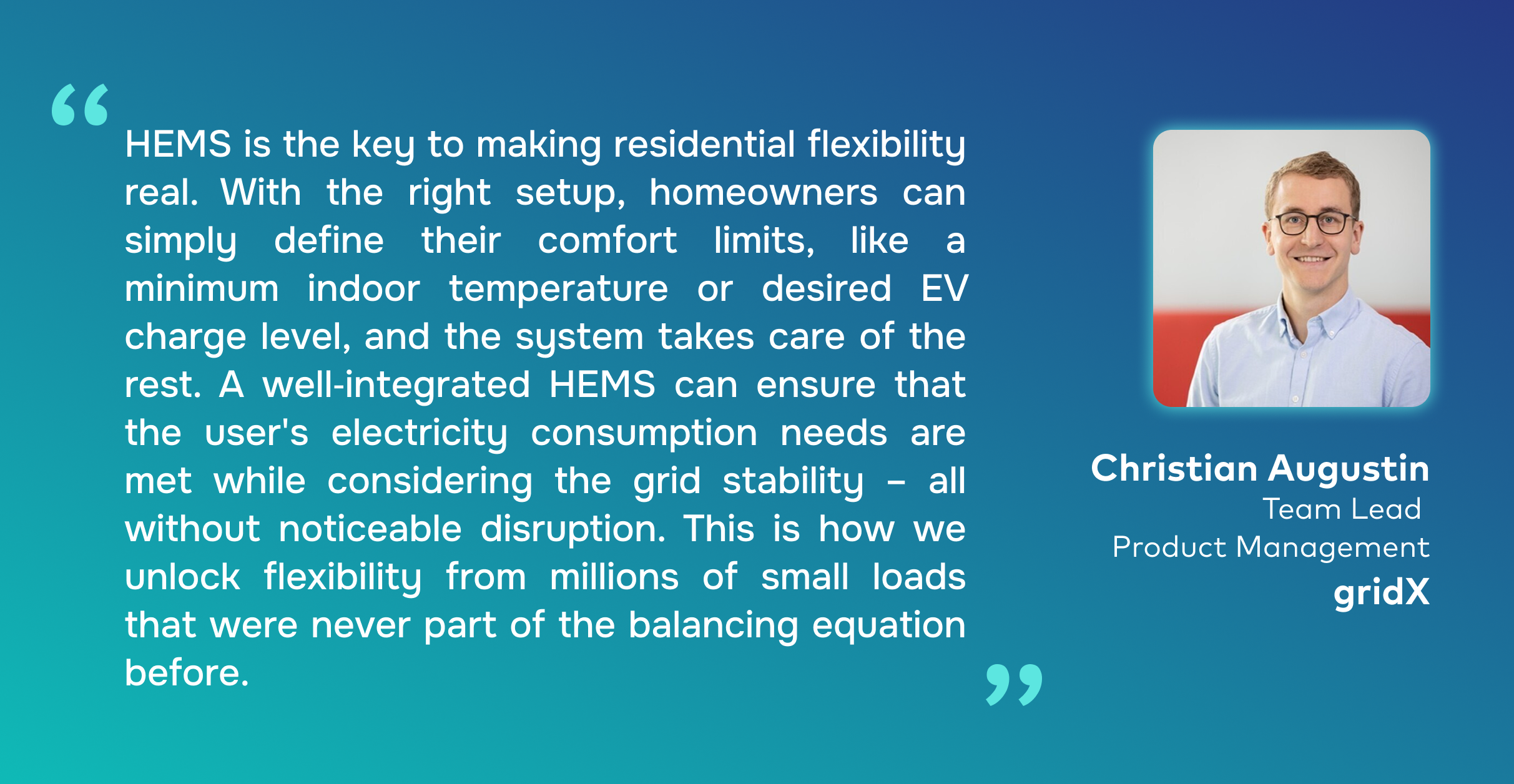Why is demand side response important in today’s energy system?
As more distributed energy resources (DERs) like rooftop solar systems, batteries, heat pumps and electric vehicle (EV) chargers are connected to the grid, supply gets cleaner yet remains hard to control in line with demand, which, due to the electrification of transport and heating, is steadily rising. These simultaneous shifts create a growing need to make demand more flexible to match it to inflexible renewable supply.
Support from regulators and agencies
Authorities see DSR as a key tool for the clean energy transition. The European Commission calls for integrating renewables with flexible technologies like demand response and storage to smooth peaks and cut reliance on fossil‑fueled plants.
Building capacity for the future
The International Energy Agency (IEA) stresses that demand response reduces the need for costly new infrastructure, helping manage surges in EV charging and heating. One scenario for net zero by 2050 requires a ten-fold increase in DSR capacity by 2030, reaching 500 GW worldwide.
A win‑win for participants and the grid
DSR is more than grid management: it turns a system challenge into a customer opportunity. Businesses and households are incentivized to participate in flexibility programs to lower their bills and their carbon footprint, while supporting a more resilient grid.
How does demand side response work: Mechanisms and programs

At its core, DSR works through a combination of signals, controls and responsive actions. The process generally involves communication between the grid (or market) side and consumers. The specific mechanisms or programs include:
Signal initiation
A triggering event occurs – for example, the grid operator detects a supply-demand imbalance. As an example, a signal is sent out to request load reduction from big consuming assets such as EV charging stations or heat pumps.
Communication and automation
Today’s DSR relies on fast communication (like standardized protocols via smart meters) to deliver reduction signals towards the assets. Large energy users and aggregators receive signals digitally and often have automated systems in place (like building management systems, smart thermostats or home energy management systems (HEMS)) to execute the requested load adjustments within seconds or minutes. Smaller consumers might be notified via an app or smart device that sends automatic notifications.
Load adjustment
Consumers respond by reducing, shifting or even increasing load (in some cases, increasing consumption can help absorb excess renewable energy). This can be done manually – e.g. a factory manager turning off some equipment – but increasingly it is automated through pre-programmed strategies. For instance, a smart EV charger or heat pump can temporarily throttle down based on an external command, without homeowner intervention. Some programs allow using on-site generation or batteries to replace grid consumption; for example, a facility might switch to a backup generator or discharge a battery during a DSR event.
Verification and reward
The reduction in demand (often called a “negawatt”) is measured against a baseline. The participant then earns the agreed incentive or bill savings for their response. This might be a direct payment per kWh curtailed in an explicit demand response program, or savings realized from avoiding high peak rates in a price-based scheme.
Types of demand response programs
DSR encompasses a variety of program structures to suit different needs. Key types of demand side response mechanisms include:
Time-of-use (ToU) pricing
A tariff structure with higher electricity prices during daily peak hours and lower prices off-peak. This encourages users to shift flexible usage (like water heating or EV charging) to cheaper times. For example, a homeowner with a time-of-use tariff might delay charging the EV until night when rates are low.

Dynamic or real‑time pricing
A pricing scheme where rates change every hour or even every 15 minutes based on wholesale market conditions. Consumers with automation or HEMS can react by shifting or reducing loads in response to these constantly changing signals.
Critical peak pricing (CPP)
An extreme form of price signal where, on certain critical peak days (e.g. very high grid stress or prices), the electricity rate shoots up significantly. Consumers are notified ahead of these events and can save by curtailing usage during the critical peak hours.
Direct load control (DLC)
A program where consumers grant the utility or an aggregator the ability to remotely control specific appliances. For instance, a utility may cycle off residential air conditioners or electric water heaters for a few minutes each hour during a peak. In return, participants often get an upfront incentive or bill credit for allowing this control.
Capacity market programs or ancillary services
Large consumers (or aggregated groups of smaller consumers) commit to providing load reductions when called upon as if they were supply resources. They might bid their ability to cut a certain amount of power into a capacity market or reserve service, and get paid capacity payments. When an event is called, they must deliver the promised drop in load or face penalties. This effectively treats demand reductions as capacity equivalent to a power plant in keeping the system reliable.
Frequency containment reserve (FCR)
Through an aggregator, prosumers can pool their flexible loads to offer rapid adjustments that stabilize grid frequency in real time via FCR. The aggregator handles the technical requirements, and participating households or small businesses get a share of the revenue for making their flexibility available.
Frequency restoration reserve (FRR)
Aggregators can also bundle prosumers’ loads to provide reserve power that restores frequency after an imbalance. When called, the aggregator remotely shifts or curtails the combined loads, and participants earn payments for supporting system balance without handling the complexity themselves.
Technical implementation and stakeholder roles
Implementing demand side response requires a combination of smart technology, robust communication and coordination among multiple stakeholders. Here’s how the pieces fit together and the roles of key participants:
Smart devices and OEMs
DSR starts with controllable devices like smart thermostats, heat pumps, EV chargers and inverters to steer PVs and batteries. Many OEMs now build DSR‑ready features into equipment, and Germany’s §14a EnWG even requires certain loads, such as wallboxes and heat pumps, to be capable of receiving external control signals. Installers ensure these devices are integrated properly so they respond reliably to grid requests.

Energy management systems
A HEMS, EMS or building management system (BMS) acts as the control hub, receiving price signals or aggregator commands and then adjusting assets automatically based on user priorities. These systems, often IoT‑enabled, serve as the “brain” translating a DSR signal into real actions like shifting a heat pump or drawing from a battery.
Market access providers
Aggregators pool flexibility from many customers and sell it into markets, dispatching commands through cloud platforms when grid operators call for load reduction. EU rules now allow independent aggregators to participate in all electricity markets alongside generators, making them the practical entry point for smaller customers.
Utilities and grid operators
Utilities and distribution system operators (DSOs) and transmission system operators (TSOs) create and run DSR programs, define participation rules and handle payments. Many now use DSR for real‑time services like frequency response; for example, the National Grid ESO’s Dynamic Containment in Great Britain contracts aggregated DSR and storage to stabilize frequency within seconds.
Regulators and policy makers
EU reforms in 2024 and 2025 further embed DSR into the market. New directives mandate dynamic pricing access, the Smart Meter Implementing Regulation secures data access, Germany’s rollout targets 95% smart meter coverage by 2030, and ACER’s upcoming Network Code on Demand Response will standardize aggregator participation. Together, these measures create a stronger foundation for flexibility across Europe.
Business benefits of demand side response for stakeholders
One reason DSR is gaining momentum is that it creates tangible benefits for all parties involved, from energy users to solution providers to the grid itself. Below we break down the key benefits and opportunities by stakeholder:
OEMs and installers
Manufacturers benefit from growing demand for DSR‑ready devices like heat pumps, chargers and inverters. For example, some regions require new air conditioners to have DSR capabilities, driving sales of smart, compliant equipment. Installers can upsell flexibility‑enabled solar and storage systems, often earning a share of aggregator incentives or ongoing service fees. This approach makes their solutions stand out in competitive markets.
Prosumers
Homes with solar, batteries or EVs can increase their return on investment by responding to price signals and grid requests. They can charge or discharge at optimal times, pause exports during congestion or even feed power back through vehicle-to-grid (V2G) technologies. A parked EV alone can support the grid and create income, adding value to assets that would otherwise sit idle. This flexibility aligns energy use with periods of solar surplus, reducing emissions.
Commercial and industrial consumers
Businesses can turn operational flexibility into direct revenue by shifting or curtailing load when signaled. Many find that smarter controls and sensors pay for themselves through ongoing DSR earnings while also lowering peak charges. In some markets, companies have earned easy ongoing revenue while cutting energy costs without disrupting operations. Visibility into consumption patterns helps identify inefficiencies and boosts resilience during grid stress.
HEMS providers
Providers of energy management systems and aggregation platforms sit at the heart of DSR growth. Their software automates load shifts, integrates market signals and shows users clear savings data. Utilities are investing in smart home technologies to add it to their future-proof portfolio and governments are introducing regulation that mandates demand response capabilities. As digitalization accelerates, these firms capture more value by enabling seamless participation.
Market access providers
Aggregators pool many small loads into market‑ready capacity, effectively running virtual power plants. In France alone, 2.4 GW of demand‑side flexibility was already active in 2022, with further growth expected as markets mature. Across the EU, regulatory changes now allow independent aggregators to participate on equal footing with generators, expanding opportunities. Advances in AI and analytics strengthen their ability to forecast and deliver reliable flexibility at scale.

Grid operators
For networks, DSR reduces peak strain, defers costly upgrades and lowers reliance on large power plants. A DNV–smartEn study estimated Europe could save €11–€29 billion per year in grid investments by 2030 with full use of flexibility. It also found 15.5 TWh of renewable generation could be used instead of curtailed, a 61% improvement. These savings flow back to consumers through more stable and affordable energy.
Society and environment
DSR can avoid 37.5 million tonnes of CO₂ annually in the EU by 2030, the equivalent of taking millions of cars off the road. It builds energy awareness and empowers consumers to actively support the grid. In crises, widespread demand flexibility makes systems more resilient and keeps prices in check.
Challenges and barriers to demand side response deployment
Technology and infrastructure
Large‑scale DSR needs smart meters, reliable communication and interoperable devices. High upfront costs for controls and upgrades can deter smaller customers, and integrating devices from different OEMs is still complex. Cybersecurity and data privacy must be addressed to build trust and protect connected assets.
Regulation and market design
Not all markets reward flexibility fairly or allow full participation in flexibility markets. Some frameworks still tie utility revenue to energy sales, slowing DSR adoption, and flat retail tariffs give little reason to shift loads. Wider use of dynamic electricity pricing and clear rules for independent aggregators would unlock more capacity.
Consumer engagement
Many users find DSR confusing or fear loss of comfort, for example concerns over heating or cooling being turned off. Strong education, user‑friendly apps and visible rewards help build trust. Opt‑in automation and override options make participation seamless without sacrificing comfort.
Measurement and operations
Proving real load reduction against baselines is complex and can affect payouts. Grid operators must manage risks like non‑performance, communication failures and post‑event demand rebounds that can create new peaks. Testing, advanced data monitoring and analysis and smarter algorithms are critical to make large‑scale DSR dependable.
Expert insights on where demand side response is heading

The next phase of demand side response is moving well beyond its industrial roots. For years, DSR participation was dominated by large factories and energy‑intensive facilities curtailing load during peaks. Now, with millions of connected assets in homes and small businesses – from EV chargers and heat pumps to rooftop PV and home batteries – the residential sector is emerging as a critical source of flexibility. Energy price volatility across Europe has accelerated this shift, as households look for smarter ways to gain energy independence, and save or even earn money. Programs are evolving to fit into everyday routines, with “set and forget” automation that handles optimization in the background.
“HEMS is the key to making residential flexibility real,” says Christian Augustin, Team Lead Product Management at gridX. “With the right setup, homeowners can simply define their comfort limits, like a minimum indoor temperature or desired EV charge level, and the system takes care of the rest. A well‑integrated HEMS can ensure that the user's electricity consumption needs are met while considering the grid stability – all without noticeable disruption. This is how we unlock flexibility from millions of small loads that were never part of the balancing equation before.”
His view reflects a broader trend in the market: aggregators are actively partnering with HEMS providers to tap into this growing pool of residential flexibility, creating neighborhood‑level resources that can be dispatched like a virtual power plant.
Advances in AI and analytics are deepening these capabilities, learning user behavior and predicting when assets can safely reduce or shift load. Vehicle‑to‑grid pilots in countries like the Netherlands, Denmark and the UK show how EV fleets can collectively provide megawatts of support back to the grid, earning owners hundreds of euros a year. Looking forward, expect to see tighter integration between HEMS, virtual power plants and dynamic tariffs enabling automated decisions at scale. As this ecosystem matures, Europe’s residential sector could rival or even surpass industrial DSR capacity, cementing demand-side flexibility as a cornerstone of a resilient, decarbonized energy system.



